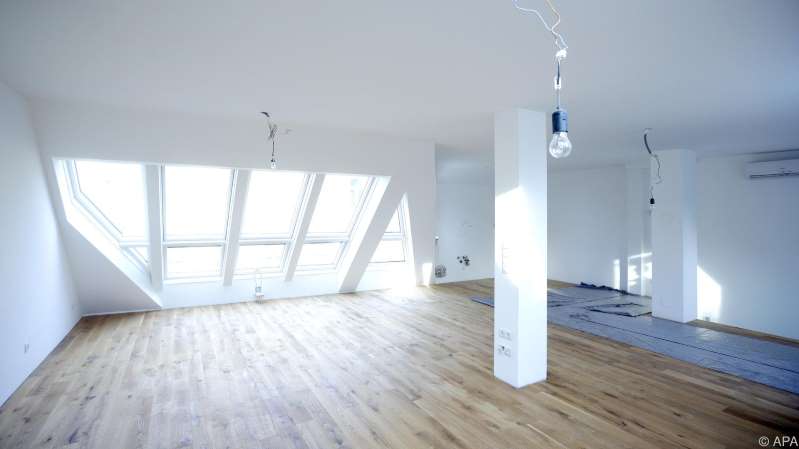There is only a shortage of new condominiums, which means that prices continue to rise noticeably.

After a new record in 2020, much fewer new apartments will be built in Vienna this year. The real estate consultant EHL assumes a significant decrease of almost 40 percent, from around 19,000 to around 11,700 apartments. However, this is not seen as worrying, but rather as a smoothing out of the peak from the previous year.
The previous year was an absolute outlier and a return to normal in 2021, said Sandra Bauernfeld, Managing Director of EHL Wohnen, in an online press conference on Monday. The new construction in the new year corresponds quite exactly to the annual structural demand in the federal capital, which results from the further population growth and the average decreasing household size. Completions will remain at the same level in the next three years, so there will be neither an oversupply nor a lack of modern apartments, said Bauernfeind.
The supply of additional rental apartments will be significantly larger than in the condominium segment, EHL expects. Therefore, as in 2020, apartment rents would remain at the current level in the following years and the increases would be in the range of the inflation rate, i.e. around plus 1.5 percent.
For apartment sales prices in good and very good locations, however, EHL expert Bauernfeind expects an increase of 4 to 5 percent per year due to the ever tighter supply. The frequent en bloc acquisitions by institutional investors would probably be responsible for 1 to 2 percent of the price increase. Big investors have been going into the housing market for years – they would buy to hold onto and then only rent out.
While the number of new condominiums that are really coming onto the market – i.e. without forward deals of entire packages – is gradually falling slightly, according to EHL it remains higher for rental apartments. In 2021, 5,000 new condominiums are expected, while there are likely to be 6,000 rental apartments (one third of which are privately financed, the rest are subsidized). In 2020, the number of condominiums is likely to be around 5,500, while the number of new rental apartments will be over 12,000 (of which 7,200 are subsidized). Around 5,000 new units per year would not cover the demand on the market, accordingly price increases are to be expected – comparatively stronger in central locations, weaker in urban development areas in peripheral locations.
In Vienna, almost 80 percent of the apartments are rented, EHL refers to data from Statistics Austria. The 912,000 main residences here are offset by 702,000 rental contracts (including 207,000 community and 190,000 cooperative apartments). Nationwide there are 1.66 million rental contracts for 3.95 million main residences (276,000 community and 666,000 cooperative apartments).
For the number of apartment transactions, EHL expert Karina Schunker is assuming 14,500 in the previous year, not all land register information is yet available. There was an increase from 12,500 transactions in 2016 to 2018, and a small slump in 2019. In 2019, 654 investment apartments were sold in Vienna, 408 in the first half of 2020, and 900 for the year as a whole. The investment volume in the past year was probably around 198 million euros, according to Schunker.

